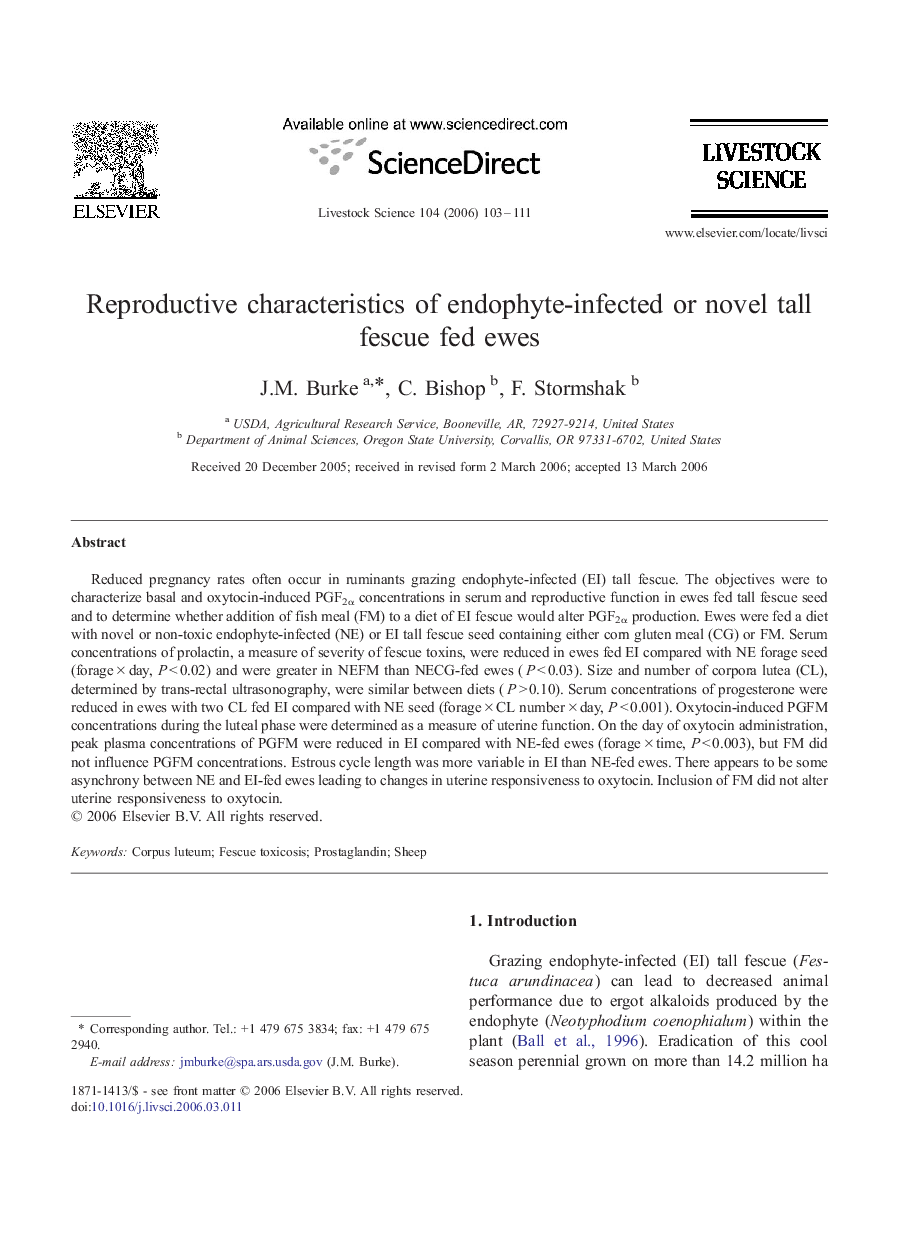| Article ID | Journal | Published Year | Pages | File Type |
|---|---|---|---|---|
| 2448830 | Livestock Science | 2006 | 9 Pages |
Reduced pregnancy rates often occur in ruminants grazing endophyte-infected (EI) tall fescue. The objectives were to characterize basal and oxytocin-induced PGF2α concentrations in serum and reproductive function in ewes fed tall fescue seed and to determine whether addition of fish meal (FM) to a diet of EI fescue would alter PGF2α production. Ewes were fed a diet with novel or non-toxic endophyte-infected (NE) or EI tall fescue seed containing either corn gluten meal (CG) or FM. Serum concentrations of prolactin, a measure of severity of fescue toxins, were reduced in ewes fed EI compared with NE forage seed (forage × day, P < 0.02) and were greater in NEFM than NECG-fed ewes (P < 0.03). Size and number of corpora lutea (CL), determined by trans-rectal ultrasonography, were similar between diets (P > 0.10). Serum concentrations of progesterone were reduced in ewes with two CL fed EI compared with NE seed (forage × CL number × day, P < 0.001). Oxytocin-induced PGFM concentrations during the luteal phase were determined as a measure of uterine function. On the day of oxytocin administration, peak plasma concentrations of PGFM were reduced in EI compared with NE-fed ewes (forage × time, P < 0.003), but FM did not influence PGFM concentrations. Estrous cycle length was more variable in EI than NE-fed ewes. There appears to be some asynchrony between NE and EI-fed ewes leading to changes in uterine responsiveness to oxytocin. Inclusion of FM did not alter uterine responsiveness to oxytocin.
